The dragon tattoo, with its sinuous and majestic form, has etched its place as an iconic symbol in the world of body art. Revered for its multifaceted meanings and artistic versatility, the dragon tattoo transcends cultural boundaries and resonates with enthusiasts worldwide. This mythical creature, often a manifestation of power, wisdom, or transformation, embodies an enduring allure that captivates those who choose to adorn their bodies with its intricate and mystic presence.
Whether rendered in traditional Asian styles, realistic depictions, or abstract interpretations, the dragon tattoo is a canvas of self-expression, embodying a rich tapestry of cultural heritage and personal narratives. As it winds its way through history and continues to evolve in contemporary tattoo culture, the dragon tattoo remains an enduring symbol of strength, beauty, and enigma.
In the realm of body art and personal expression, few symbols have captivated the imagination of enthusiasts and onlookers alike as intensely as the dragon tattoo. From its origins steeped in ancient mythology to its resurgence in contemporary pop culture, the dragon tattoo has evolved into a multifaceted emblem of power, mystique, and personal significance. With its intricate designs and rich symbolism, the dragon tattoo has transcended mere ink on skin to become a canvas of meaning, a trendsetter, and a unique style statement.
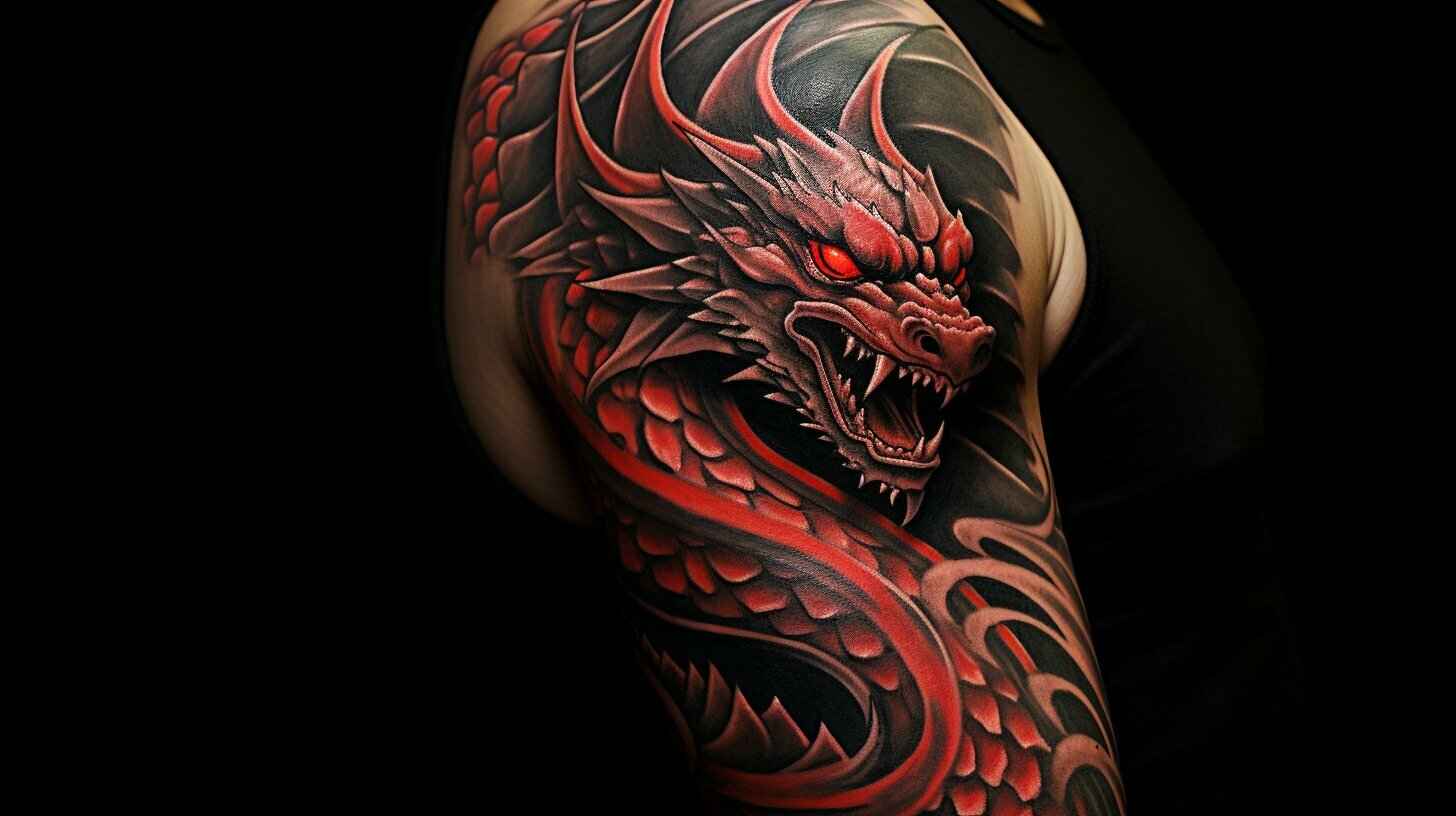
The origins of the dragon tattoo are as diverse as the cultures that have embraced it. Its history traces back thousands of years to the ancient civilizations of China, Japan, and Scandinavia, where dragons held various symbolic meanings. In Chinese folklore, the dragon represents strength, wisdom, and imperial authority, while in Japanese culture, it often symbolizes water and fertility. In Norse mythology, dragons were powerful and fearsome creatures, embodying chaos and destruction.
Over time, these diverse cultural interpretations of the dragon merged and intertwined, creating a rich tapestry of symbolism that captivates those who choose to adorn their bodies with this majestic creature. Today, the dragon tattoo has become a global phenomenon, transcending cultural boundaries to become a symbol that speaks to the human desire for power, transformation, and the enigmatic.
In this exploration of the dragon tattoo, we delve deep into its meanings, trace its historical and cultural evolution, examine its current trends, and appreciate the various styles it encompasses. This comprehensive study aims to shed light on why this timeless symbol continues to capture the hearts and minds of tattoo enthusiasts worldwide.
I. The Meanings Behind the Dragon Tattoo
Dragon tattoos embody diverse meanings across cultures. In Eastern traditions, they signify power, wisdom, and prosperity, often associated with protection and good fortune. In Western contexts, dragons symbolize strength, courage, and resilience, often representing a rebellious spirit or overcoming challenges. Their allure transcends borders, uniting mythical reverence and personal significance.
The dragon tattoo, with its complex and multifaceted symbolism, holds different meanings for those who choose to wear it. These meanings often reflect the individual’s personal beliefs, experiences, and cultural affiliations. Here, we explore some of the most prominent interpretations of the dragon tattoo:
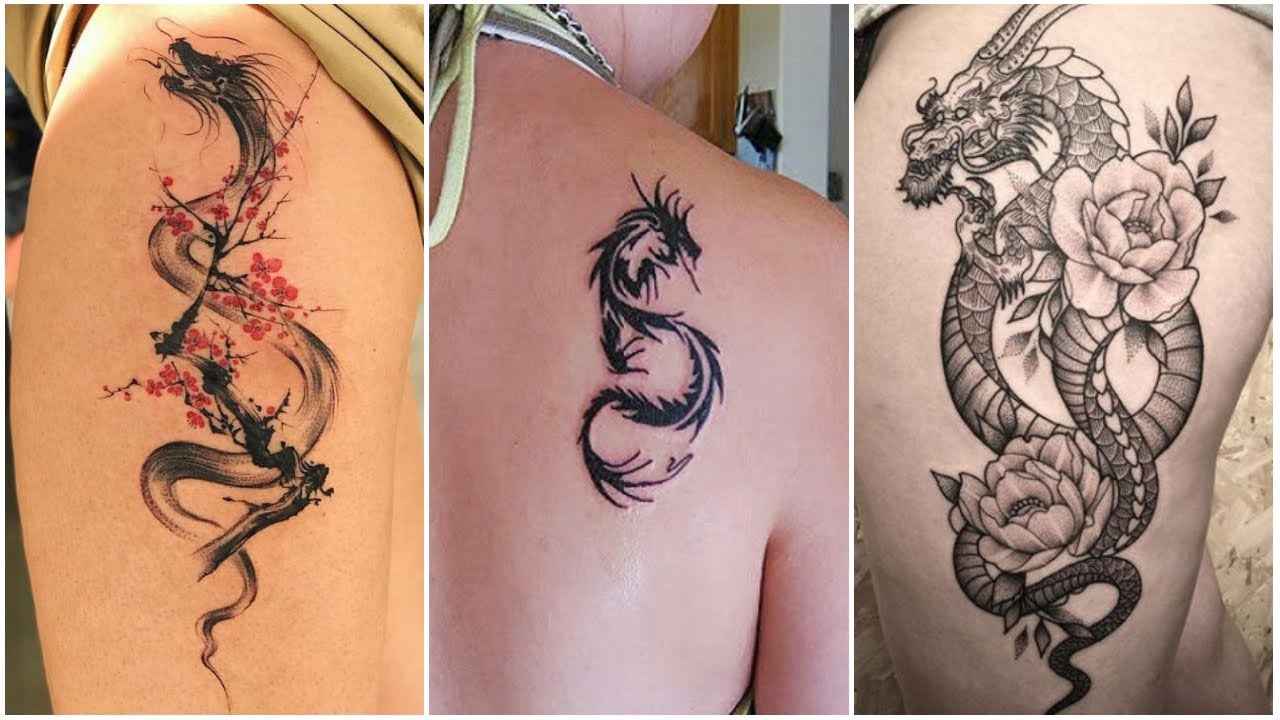
- Power and Strength: The dragon is often associated with strength, both physical and mental. Its formidable presence and ability to conquer challenges make it a symbol of inner and outer power. People who opt for a dragon tattoo may do so to convey their resilience, determination, and ability to overcome adversity.
- Wisdom and Intelligence: In many cultures, dragons are considered creatures of great wisdom and intelligence. Those who choose a dragon tattoo may seek to express their intellectual prowess, keen insight, and ability to make wise decisions.
- Protection: Some individuals opt for a dragon tattoo as a talisman of protection. In Chinese tradition, the dragon is believed to guard against malevolent spirits and offer its bearer safety. This interpretation is especially popular among those who believe in the protective properties of the dragon symbol.
- Transformation and Rebirth: Dragons often undergo transformative processes, such as shedding their old skin or emerging from the depths of the ocean. This ability to transform and be reborn is symbolic of personal growth, change, and renewal. A dragon tattoo can serve as a reminder of one’s capacity for transformation and the pursuit of a better self.
- Balance and Harmony: In some cultures, dragons are associated with the elements of earth, water, fire, and air, symbolizing the balance and harmony of nature. A dragon tattoo may represent an individual’s quest for equilibrium in their life, the world, or the universe.
- Mystique and Enigma: Dragons are shrouded in mystery and often inhabit hidden realms. People who choose a dragon tattoo may be drawn to the enigmatic allure of the creature, seeking to convey an air of mystery and intrigue in their own lives.
- Cultural Significance: For those with Chinese, Japanese, or other Asian heritage, the dragon tattoo may hold deep cultural significance. It can serve as a connection to their roots, a celebration of their cultural heritage, or a nod to the traditions and folklore of their ancestors.
- Personal Story and Identity: Many individuals choose a dragon tattoo to commemorate a personal journey or life experience. The tattoo may symbolize a triumph over adversity, the pursuit of a lifelong dream, or a significant turning point in one’s life.
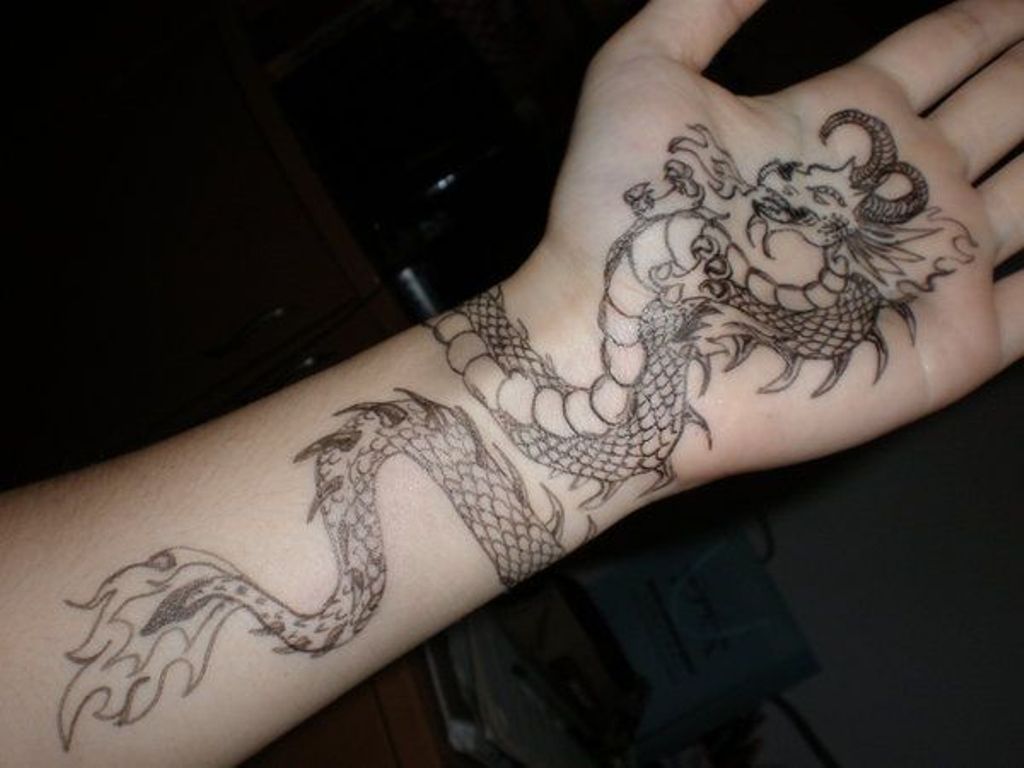
The meanings associated with a dragon tattoo can be as diverse as the individuals who wear them. They may choose to adopt one or several of these interpretations, or they may have their own unique reasons for embracing this iconic symbol. Regardless of the specific meaning, the dragon tattoo serves as a powerful representation of personal identity and self-expression.
II. The Historical Evolution of Dragon Tattoos
The origins of the dragon tattoo can be traced back thousands of years, with each culture contributing its own unique perspective and style. To truly appreciate the dragon tattoo’s significance today, it is essential to understand its historical evolution.
Dragon tattoos boast a rich historical evolution. Originating in Asian cultures like China and Japan, they symbolize power, wisdom, and protection. Initially reserved for royalty, they evolved into symbols of rebellion and strength in Western tattoo culture. Today, they remain a timeless emblem of mythical allure and personal empowerment.
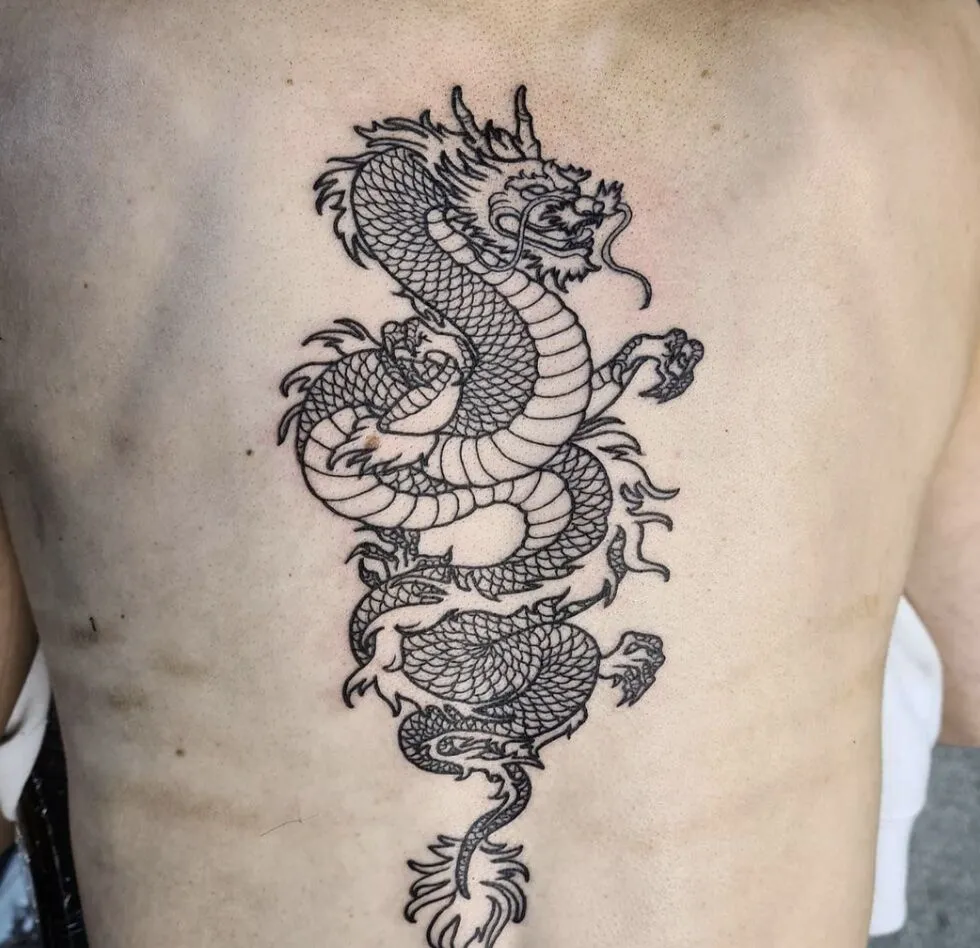
- Ancient China: The Celestial Dragon In China, the dragon has long been regarded as a celestial creature associated with power and prosperity. Chinese emperors often used the dragon as a symbol of their imperial authority. The dragon’s appearance in early Chinese tattoos reflected this association with royalty and nobility. These tattoos were typically elaborate and intricate, showcasing the dragon’s serpentine body, scales, and fierce expression.
- Japan: The Water Dragon In Japanese culture, the dragon takes on a slightly different persona. It is often associated with water and seen as a guardian of rivers, lakes, and seas. Japanese dragon tattoos, known as “ryū” or “tatsu,” have a distinctive style characterized by bold lines and vibrant colors. They often depict the dragon coiled or writhing, with a sense of motion and fluidity.
- Norse Mythology: The Dragon of Chaos In Norse mythology, dragons were creatures of chaos and destruction. They were powerful adversaries of the gods and heroes. Viking dragon tattoos were more fearsome in appearance, often reflecting the dragon’s role as a formidable antagonist. These tattoos featured menacing, sharp-toothed dragons and were commonly etched into the skin of Norse warriors.
- Southeast Asia: Serpentine Guardians In Southeast Asian cultures like Thailand and Cambodia, dragon tattoos took on the form of guardian serpents, known as “naga.” These creatures were believed to protect temples and sacred sites. Naga tattoos are often depicted with multiple heads and intricate, ornate designs, reflecting the region’s rich artistic traditions.
- Modern Western Culture: A Fusion of Styles In the modern Western world, the dragon tattoo has undergone a fusion of styles, drawing inspiration from various cultural interpretations. This amalgamation has resulted in a diverse range of dragon tattoo designs, from realistic and highly detailed dragons to more abstract and artistic representations. Western dragon tattoos may incorporate elements from Asian, Norse, or other mythologies, creating a unique blend of cultural influences.
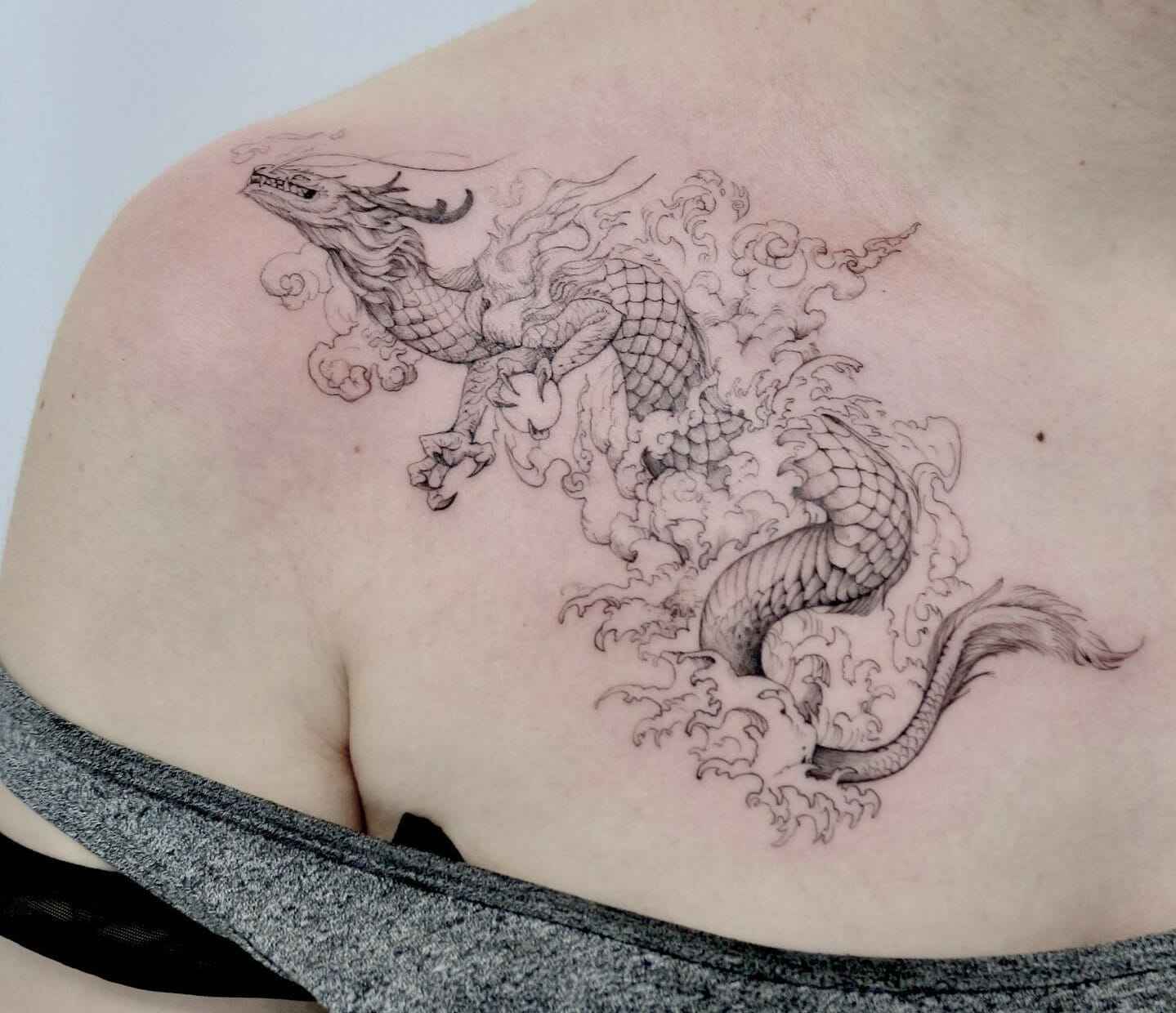
The historical evolution of the dragon tattoo is a testament to its enduring appeal and adaptability. As it spread across different cultures and time periods, it absorbed new meanings and design elements while retaining its core symbolism of power, transformation, and mystique.
III. The Contemporary Dragon Tattoo Trend
In recent decades, the dragon tattoo has experienced a resurgence in popularity, driven by a combination of factors, including its rich symbolism, aesthetic appeal, and its presence in popular culture. Here, we explore the contemporary dragon tattoo trend and the reasons behind its enduring allure.

- Pop Culture Influence: The dragon’s presence in popular culture has played a significant role in its resurgence. From literature and film to video games and television, dragons have captured the imagination of millions. Iconic works like J.R.R. Tolkien’s “The Hobbit” and the “Game of Thrones” series have featured dragons as central characters, further fueling the fascination with these mythical creatures.
- Celebrity Endorsements: Celebrities, athletes, and musicians have embraced dragon tattoos, making them a fashionable choice for those looking to emulate their idols. High-profile figures such as Dwayne “The Rock” Johnson, Angelina Jolie, and David Beckham have sported dragon tattoos, contributing to their popularity among fans.
- Tattoo Artistry Advancements: Advances in tattooing techniques and equipment have allowed artists to create intricate and detailed dragon tattoos that were once difficult to achieve. The availability of a wide range of ink colors and the ability to incorporate shading and fine details have made dragon tattoos more visually striking and appealing.
- Personalization and Customization: In the contemporary era, individuals have sought to make their tattoos more personal and meaningful. This has led to a trend of customizing dragon tattoos to reflect one’s unique experiences and beliefs. Some opt for minimalist designs, while others choose elaborate, full-body dragon tattoos that tell a story.
- Gender Neutrality: Unlike the past, when certain tattoo styles were associated with specific genders, dragon tattoos have become increasingly gender-neutral. Both men and women now embrace dragon tattoos, breaking down traditional gender boundaries in the world of body art.
- Fusion of Styles: Modern dragon tattoos often blend different artistic styles and cultural influences. This fusion allows individuals to create tattoos that are both deeply meaningful and visually striking. Whether it’s combining Japanese and Celtic elements or infusing a dragon with contemporary artistry, the possibilities are endless.
- Tattoo Communities and Social Media: The rise of social media has allowed tattoo enthusiasts to share their inked creations with a global audience. Tattoo communities on platforms like Instagram and Pinterest have fostered a sense of community and inspiration, driving the popularity of dragon tattoos and other body art forms.
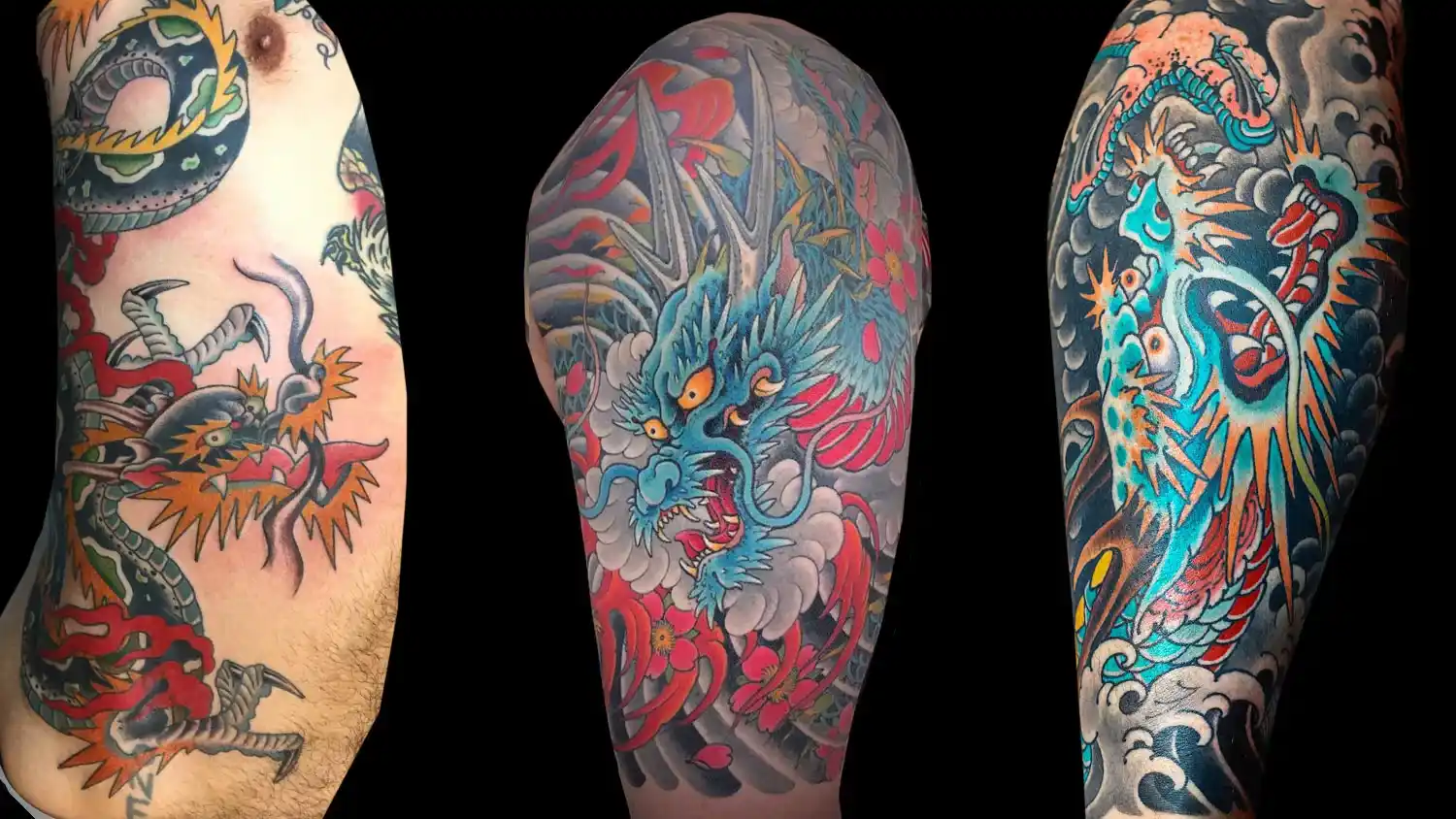
The contemporary dragon tattoo trend is marked by a fusion of tradition and innovation. It embraces the ancient symbolism of the dragon while adapting to the ever-evolving tastes and preferences of tattoo enthusiasts in the modern age.
IV. Styles of Dragon Tattoos
The style of a dragon tattoo can vary significantly, depending on the individual’s preferences and the tattoo artist’s expertise. While some people opt for traditional and realistic representations, others choose more abstract or artistic interpretations. Here are some of the most popular styles of dragon tattoos:

- Traditional Asian Style: This style draws inspiration from Chinese and Japanese art and often features a long, serpentine dragon with flowing lines and vibrant colors. Traditional Asian dragon tattoos are known for their intricate details, including scales, whiskers, and claws.
- Realism: Realistic dragon tattoos aim to depict the creature with lifelike precision. These tattoos require a high level of skill and attention to detail, often showcasing the dragon as if it were a living, breathing entity.
- Tribal: Tribal dragon tattoos are characterized by bold, black lines and geometric patterns. They often have a more abstract and symbolic appearance, with the dragon’s form simplified into essential shapes and curves.
- Watercolor: Watercolor dragon tattoos mimic the fluidity of watercolor paintings. They are known for their vibrant and blended colors, often resembling a dragon emerging from a colorful background.
- Neo-Traditional: Neo-traditional dragon tattoos are a contemporary take on traditional tattoo styles. They combine the classic elements of traditional tattoos with modern design aesthetics, resulting in bold and vibrant dragon tattoos with a fresh twist.
- Black and Gray: Black and gray dragon tattoos utilize a limited color palette, typically consisting of shades of gray and black. These tattoos focus on contrast and shading to create depth and dimension.
- Minimalist: Minimalist dragon tattoos strip the design down to its most essential elements, often featuring a simple outline or silhouette of a dragon. These tattoos convey a clean and understated aesthetic.
- Full-Body or Sleeve: Some enthusiasts opt for full-body or sleeve dragon tattoos, covering large areas of their skin with intricate dragon designs. These tattoos often tell a story or incorporate various elements of the dragon’s mythology.
- Geometric: Geometric dragon tattoos blend the dragon’s form with geometric shapes and patterns. These tattoos have a modern and abstract appearance, with the dragon’s body composed of interconnected lines and shapes.
- Fusion Styles: Many individuals choose to combine different tattoo styles to create a unique and personalized dragon tattoo. For example, a fusion of traditional Asian and Celtic elements can result in a striking and culturally rich design.
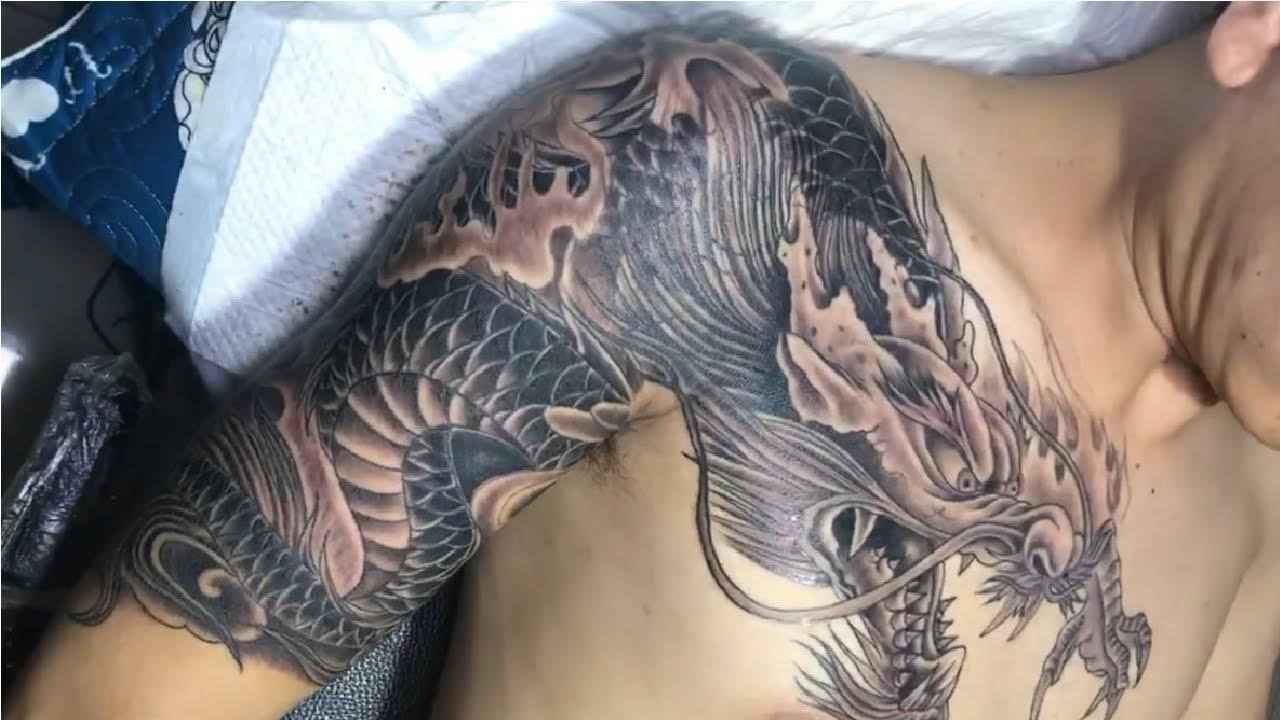
The choice of style for a dragon tattoo is highly personal and often reflects the individual’s artistic preferences, cultural influences, and the story they wish to tell through their inked creation.
Conclusion
The dragon tattoo, with its deep-rooted meanings, historical evolution, contemporary trends, and diverse styles, stands as a timeless symbol of human fascination with the mystical and powerful. From the celestial dragons of ancient China to the water dragons of Japan and the fierce Norse beasts, the dragon has been an enduring emblem of strength, wisdom, and transformation.
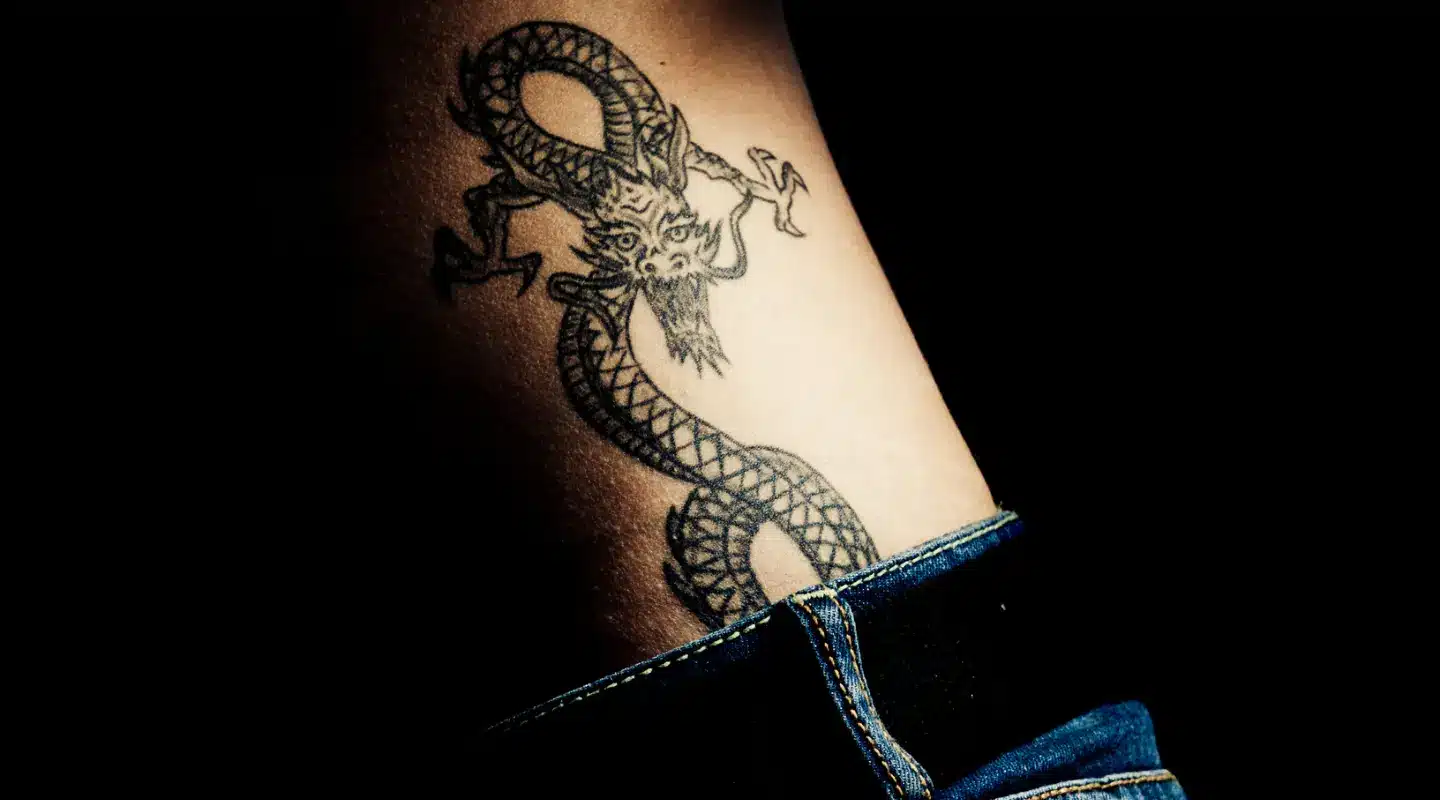
In the modern era, the dragon tattoo continues to captivate tattoo enthusiasts worldwide. Its resurgence in popularity can be attributed to its influence in popular culture, celebrity endorsements, advancements in tattoo artistry, and the desire for personalized and meaningful body art. The dragon tattoo trend thrives on a fusion of tradition and innovation, where the ancient symbolism of the dragon adapts to the ever-evolving tastes and preferences of tattoo enthusiasts.
As individuals from all walks of life continue to embrace the dragon tattoo, it serves as a powerful reminder of the enduring human quest for personal identity, strength, and the enigmatic. Whether as a symbol of power, wisdom, protection, or transformation, the dragon tattoo will undoubtedly remain an iconic and cherished form of self-expression for generations to come.
Share this content:
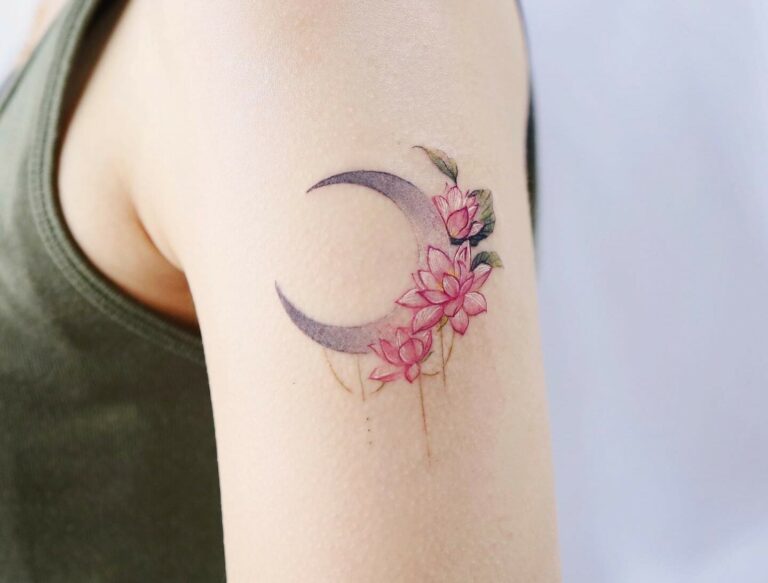
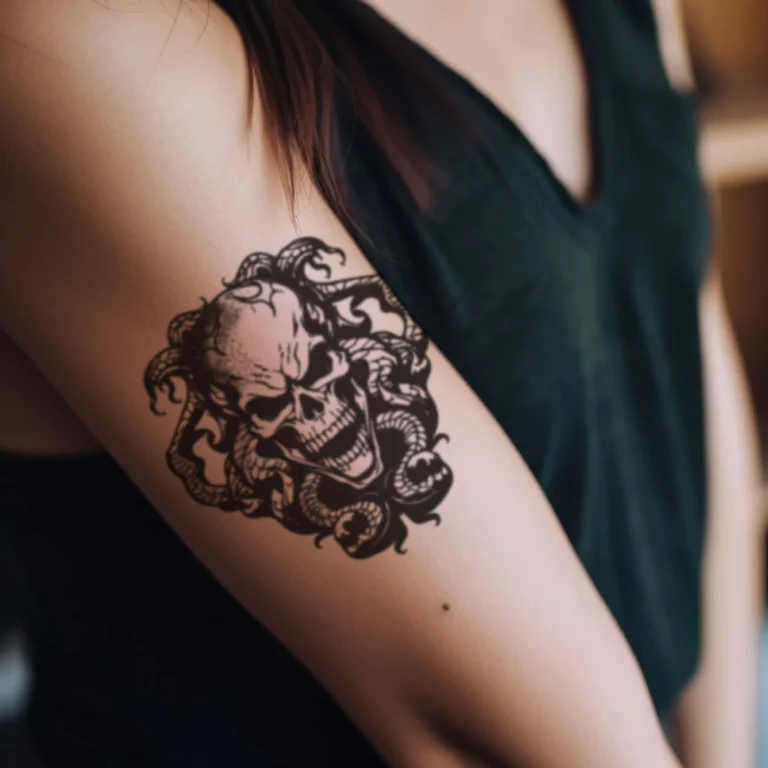
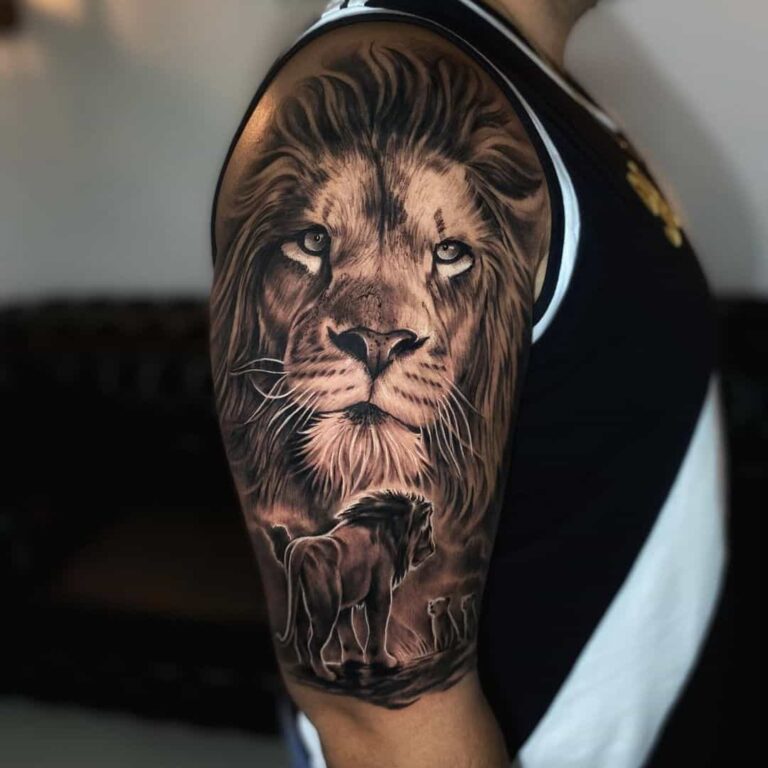





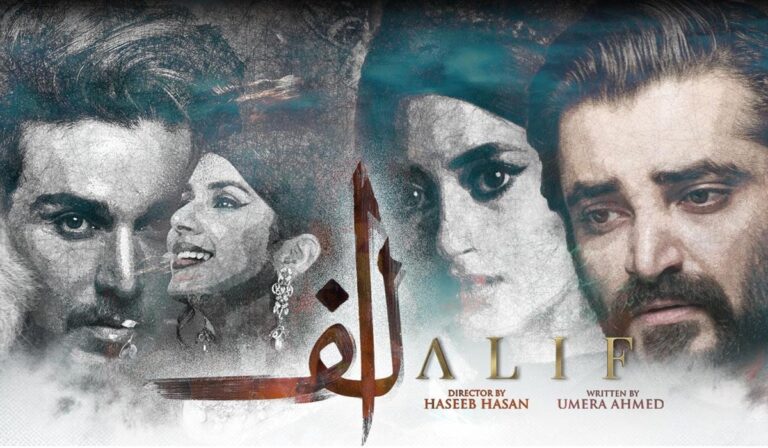


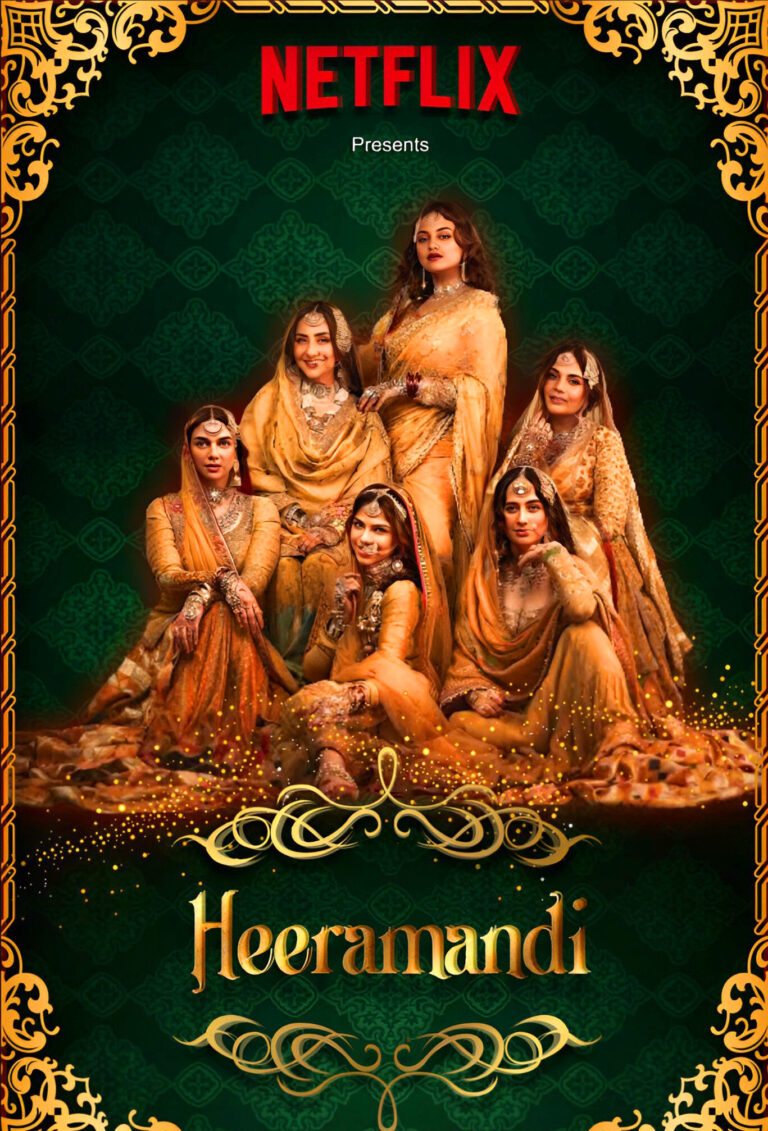
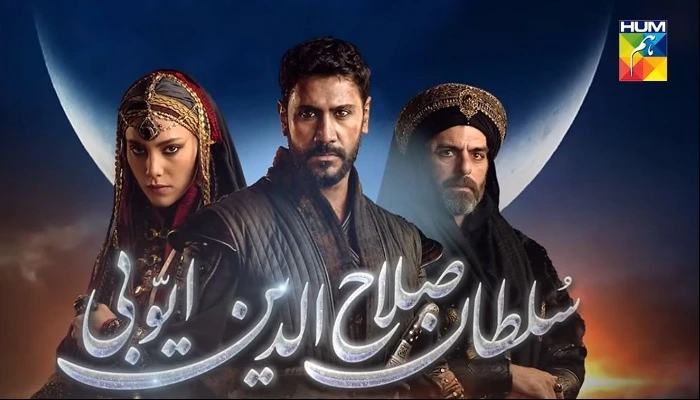
+ There are no comments
Add yours